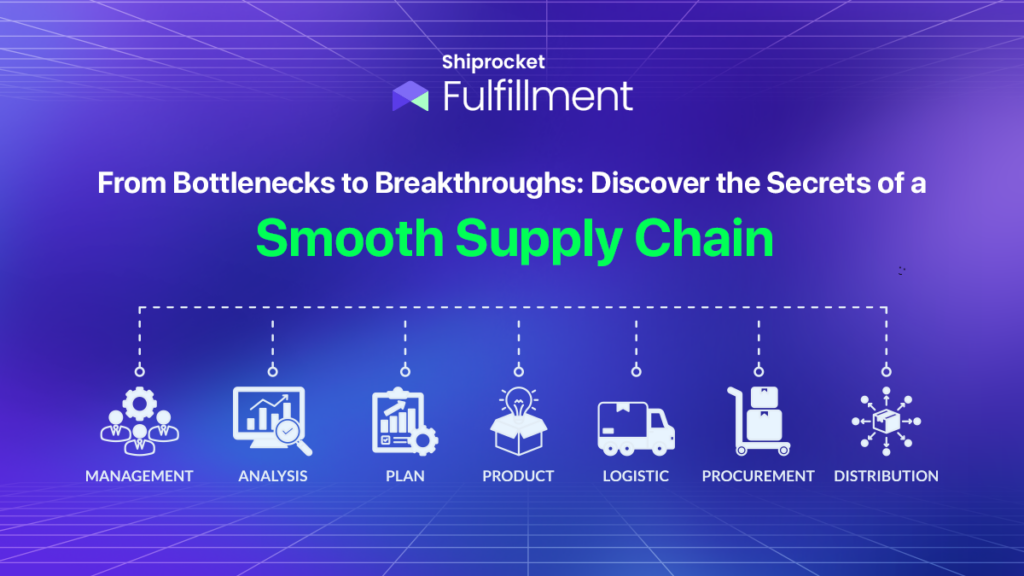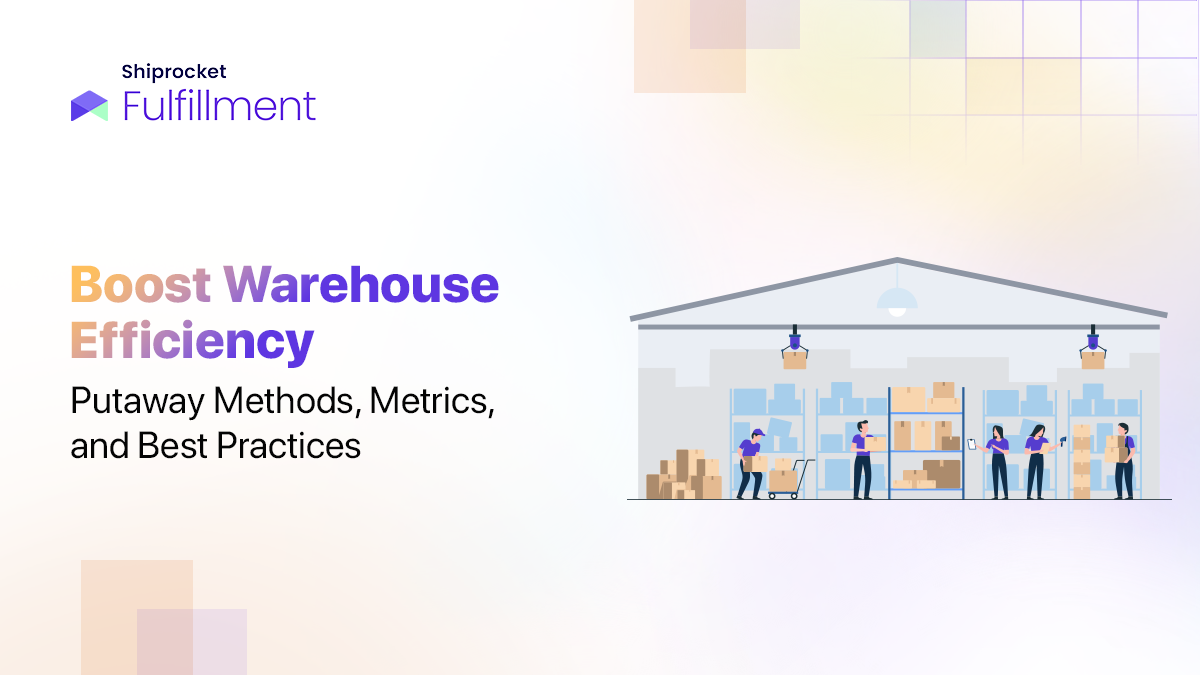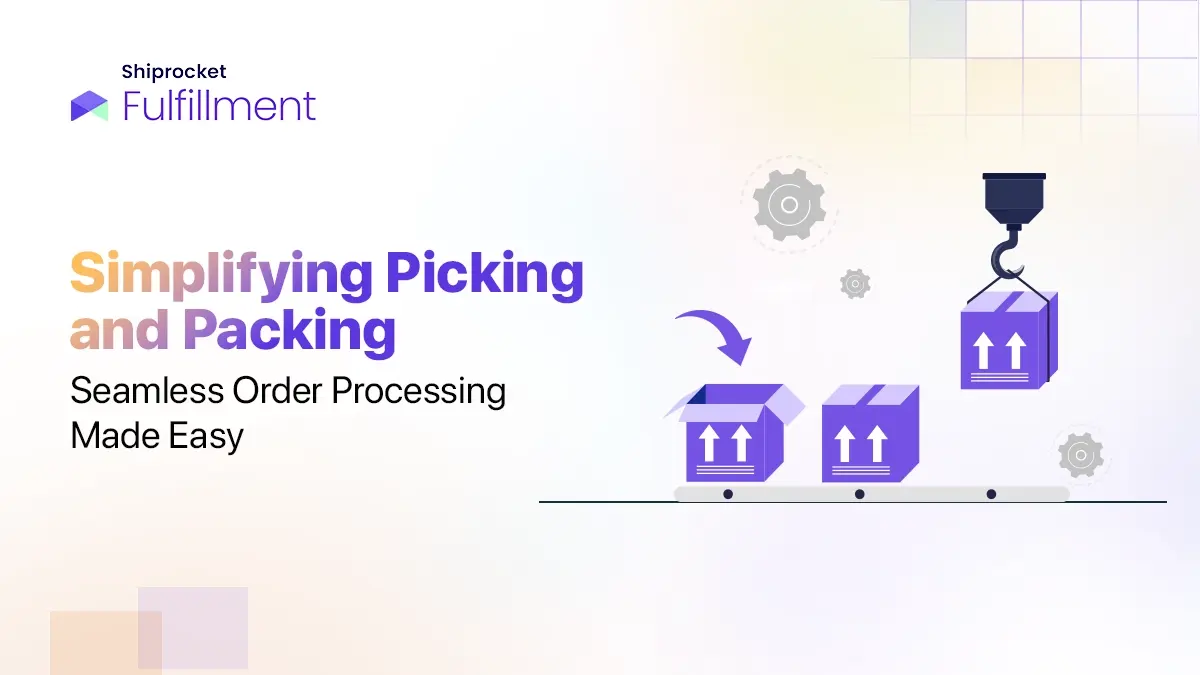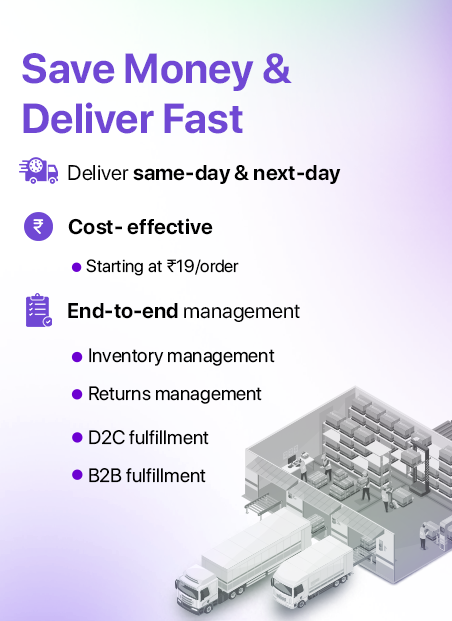- Introduction
- What Are Supply Chain Bottlenecks?
- Identifying Common Reasons Behind Supply Chain Bottlenecks
- The Future of Supply Chain Bottlenecks
- Challenges for eCommerce sellers
- Tackling Supply Chain Bottlenecks: Solutions for 2023
- Using Shiprocket Fulfillment to Navigate Supply Chain Bottlenecks
- Conclusion
- Frequently Asked Questions(FAQs)
Introduction
Supply chain management forms the heart of any organisation. Supply chains are fragile and require much thought while implementing supply chain management processes. Ensuring that an order placed by your clients is completed requires careful calculations, tedious coordination between several parties, and ensuring that the timeline for the entire process is adhered to. Thus, even the smallest roadblock in the supply chain process can create major issues for your organisation.
Suppliers and consumers have witnessed this delicate balance firsthand as the COVID-19 pandemic triggered a new market dynamic. The new market was rapid and extremely hard to keep up with. However, the consequences post the pandemic have made enterprises rethink their entire supply chain processes and focus on its agility to eliminate the risk of supply chain bottlenecks in the future.

What Are Supply Chain Bottlenecks?
Supply chain bottlenecks are a stage of challenges or blockage that gives rise to delays, hindering goods from navigating the remainder of the supply chain process. It causes a loss of money and time while increasing production and manufacturing costs. Navigating these bottlenecks ensures a quick and efficient supply chain system.
Supply chain bottlenecks do not always ensure a complete shutdown of the supply chain processes. Sometimes, they are small and can keep the chain running. However, it hinders the efficiency of the processes.
The lifecycle of a supplier’s products can be extremely complex. It moves from product development to manufacturing and dispatch, where the client finally claims it. Supply chain bottlenecks create erratic barriers that can disastrously affect the business’s profits. Some major contributing factors that lead to bottlenecks include poor warehouse management, underdeveloped supply chain operation processes, lax inventory norms, inefficient manpower, minimal supply chain transparency, lack of resource networks, etc.
Identifying Common Reasons Behind Supply Chain Bottlenecks
Supply chains have endured major disruption for quite some time now globally. Many challenges still do not have any solution. Capacity crunches, lack of manpower, material shortages, rapid rise in demand, and the lingering subsidiary effects of the COVID-19 pandemic make supply chain bottlenecks unavoidable.
The lifecycle of a supplier’s products can be extremely complex. It moves from product development to manufacturing and dispatch, where the client finally claims it. Supply chain bottlenecks create erratic barriers that can disastrously affect the business’s profits. Some major contributing factors that lead to supply chain bottlenecks include poor warehouse management, underdeveloped supply chain operation processes, lax inventory norms, inefficient manpower, minimal supply chain transparency, lack of resource networks, etc.
Furthermore, small eros may also create congestion and jams in the supply chain process that can have lasting impacts. The errors that most frequently lead to supply chain bottlenecks include:
- Inability to predict demand
- Lax management of contingency plans
- Warehousing and inventory management problems
- Lack of communication amongst suppliers, vendors, customers, stakeholders, and other relevant personnel.
To understand supply chain bottlenecks better, here are a few instances of supply chain bottlenecks along with their causes:
The bottleneck of 2020
The covid-19 pandemic was the primary cause of supply chain disruptions in 2020. Here are multiple reasons why:
- The movement of people and goods was restricted. It delayed the transportation of raw materials and finished goods.
- Factories were either shut down or running at extremely low capacities. It’s because lockdowns restricted factory workers to work in small batches to maintain social distancing. Moreover, most factory workers were either unwell or unable to travel for work.
- The demand for cleaning products surged during the pandemic. However, lockdowns and other restrictions limited the flow of goods. It prevented the goods from being manufactured fast enough and in sufficient quantities. Eventually, it resulted in businesses being unable to fulfill orders.
The bottleneck of 2021
With the continuation of the pandemic, the global labour shortage became a bigger problem in 2021. Most workers left the workforce for several reasons. These reasons included health concerns and more. In addition to the pandemic, several other challenges arose, disrupting the supply chain network. These include the infamous Suez Canal obstruction, etc. Though these events didn’t have as far-reaching an impact as the pandemic, they resulted in significant supply chain bottlenecks in the concerned areas.
The bottleneck of 2022
This year also saw global supply chain disruptions due to several reasons. These reasons include extreme climate conditions, natural disasters, and geopolitical conflicts. Wild fluctuations in oil prices due to Russia’s invasion of Ukraine were one of the primary supply chain bottlenecks.
The Future of Supply Chain Bottlenecks
The aforementioned problems and several other disruptions over the past few years have exposed and highlighted the vulnerable areas of the global supply chain. It has led to the rise of focusing and replenishing supply chain resilience amongst several brands.
According to several studies, many organisations are adopting formal risk management processes, automated technologies, digitising many supply chain processes, and pursuing regionalisation.
Now entering a post-pandemic era, eCommerce businesses will have to understand how to create a more dexterous and agile supply chain that is strongly streamlined to face any change that may come their way.
Challenges for eCommerce sellers
The challenges faced by supply chains can vary. Not every supply chain is the same. It depends on the type of business, processes involved, warehousing strategies, etc. However, here are the most common issues that cause supply chain bottlenecks for businesses:
- Lack of dexterity
Switching suppliers is not an easy task. Similarly, changing warehouse strategies, inventory management processes, fulfillment workflows, and even adopting new technology and automation processes can pose a daunting task. As supply chains are so delicately constructed, they often tend to be resistant to change and inflexible during emergencies. The lack of adaptability and agility makes it difficult to overcome bottlenecks, especially in dynamic and unpredictable markets.
- Dependency
Irrespective of manufacturing or simply distributing your products, a supply chain system always depends on something. They are unlikely to be completely independent. Retailers and merchants often tend to rely on suppliers and vendors for raw materials, making them vulnerable to bottlenecks that arise within procurement.
Congestions in procurement are especially harmful as this stage determines how the rest of the supply chain process shall function. Hence, dependency plays a major role in the success or failure of a supply chain process.
- Consumer expectations
The consumer needs to be more aware of how your supply chain process works. They simply require their order to arrive on time. Thus, a supply chain inconvenience can negatively impact any enterprise’s consumers. Delays and additional costs due to bottlenecks can frustrate customers and create bad experiences with your organisation. It, in turn, can lead to loss of business.
Tackling Supply Chain Bottlenecks: Solutions for 2023
Certain issues in a supply chain are inevitable. Irrespective of all the planning and implementation of new methods, these can come your way. However, the right infrastructure and systems can help you navigate these roadblocks and lead you to the right solutions.
Establishing good relations with your suppliers and vendors and balancing your inventory through proper warehouse management solutions such that they are neither under or over-stocked can eliminate supply chain disruptions.
Actions eCommerce Businesses Can Take to Address Supply Chain Bottlenecks
Combatting supply chain bottlenecks is a tricky task. There isn’t one perfect solution to overcome these challenges. However, here are a few tricks that can help you easily navigate through them:
- Good inventory management
Inventory management is vital to avoid any procurement roadblocks hindering your supply chain. A watchful eye on your inventory can help you easily avoid back orders and order logging. Furthermore, it can also help you identify opportunities for process optimisation. It can make your supply chain process lean and agile, minimising the risk of bottlenecks.
Irrespective of your inventory management, ensuring enough stock for a safety backup can help you navigate bottlenecks easily. Conducting regular auditing and tracking of your units can help in preventing shortages.
- Enhancing demand forecasting techniques
Inventory is everything. Insufficient in-hand inventory leads to bottlenecks and an inability to meet consumer demands. Thus, all enterprises must employ demand forecasting strategies to ensure they have enough stock of the right materials to satisfy their demands without overstocking.
Surveying their customers can help an enterprise understand their product preferences and analyse order histories to identify trends. The trends can act as raw data to improve the demand forecasting process.
- Customer communication
Supply chain bottlenecks are a major issue. It is important to keep your customers informed in case of congestion, especially in cases where their order is affected. Despite the consumer’s lack of understanding, the proactive initiative by the enterprise will be appreciated. The honesty and transparency in your supply chain processes will help you recover consumer loyalty and might also help your brand engagement.
- Strengthening supply chain agility
Efficiency and agility in your supply chain processes are vital to prepare you to face different challenges. Regular risk assessments and continuous improvement strategies must be implemented to minimise the gaps in your supply chain processes. They shall help you face all dynamic situations with ease.
Using Shiprocket Fulfillment to Navigate Supply Chain Bottlenecks
Finding alternative solutions to bottlenecks is vital to leave them behind. One of the best ways to streamline your supply chain management processes is to partner with a third-party enterprise. Shiprocket Fulfillment can help your eCommerce business navigate these unpredictable and erratic supply chain bottlenecks.
Shiprocket Fulfillment can help you take these intensive warehousing and optimising issues off your hands. Its in-house processes can help you conquer the business world while eliminating bottlenecks.
Conclusion
In conclusion, the market is extremely dynamic and unpredictable. A supply chain network requires the agility to adapt to frequent disruptions quickly to avoid bottlenecks. As bottlenecks can largely hinder your business, it is vital to understand how to navigate the challenges coming your way.
Frequently Asked Questions(FAQs)
Yes. Supply chain bottlenecks are a global issue. Global supply chain bottlenecks are caused by several factors, including geopolitical tensions, natural disasters, transportation delays, and more.
Supply chain bottlenecks can be both temporary and long-term issues. How long a supply chain bottleneck lasts depends on several underlying factors. Long-term supply chain bottlenecks take time to address and are more challenging to resolve.
Completely eliminating supply chain bottlenecks may prove challenging. Supply chain bottlenecks arise from several reasons, including natural disasters, geopolitical tensions, transportation delays, unexpected demand fluctuations, etc. Though it might be impossible to completely eliminate supply chain bottlenecks, their impact can be minimised with careful implementation of effective strategies.





